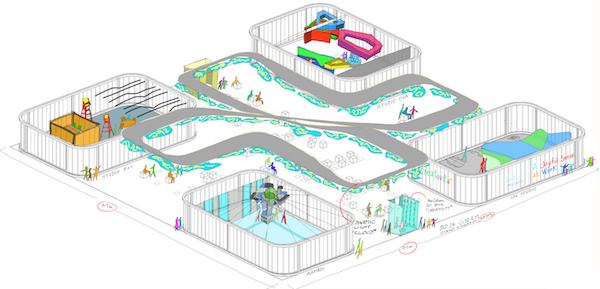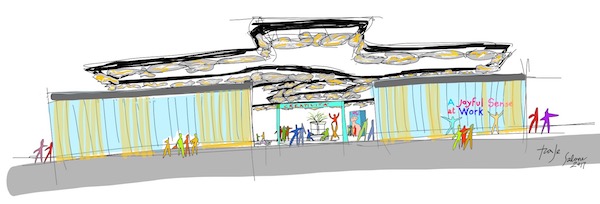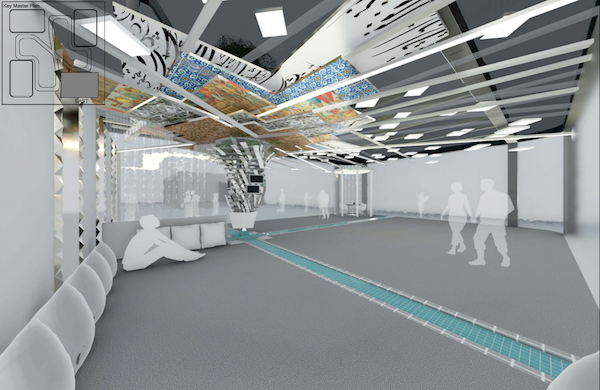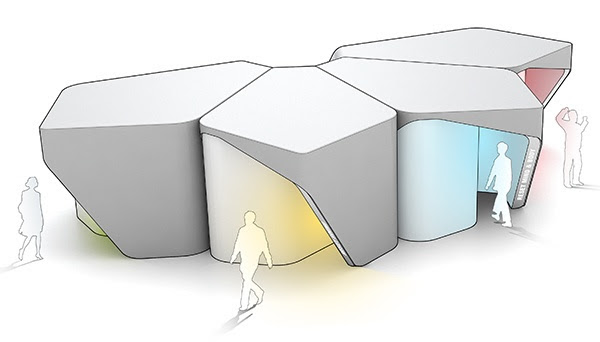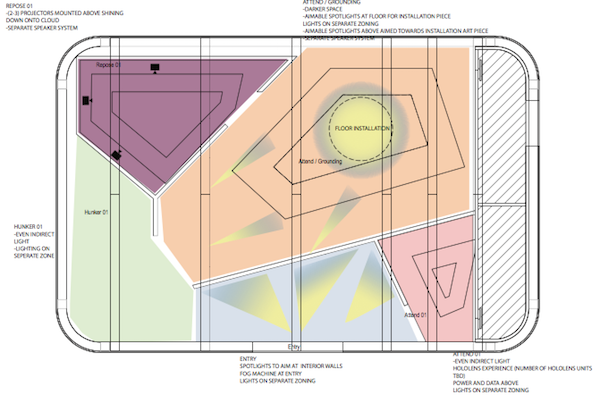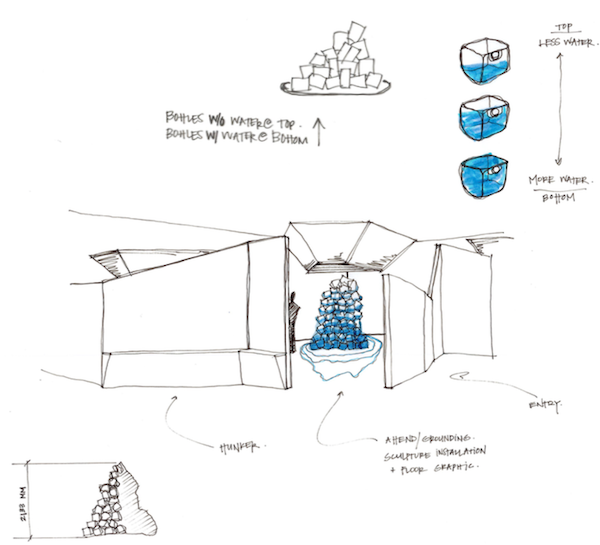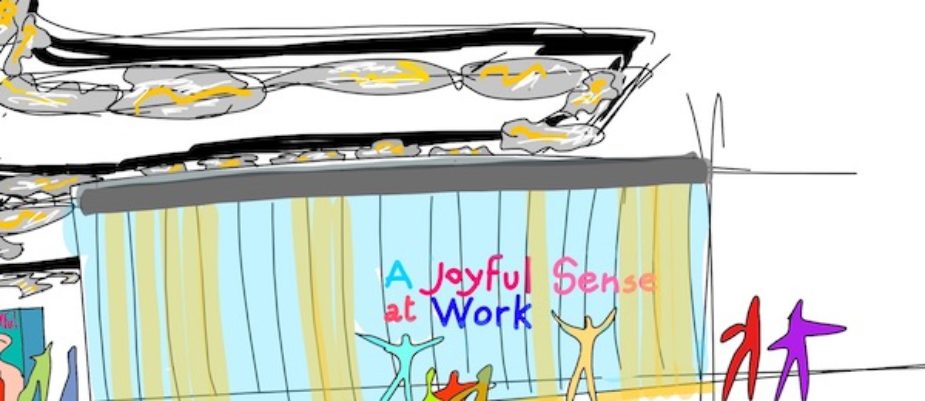
Our attention is focused on the relationship between Work and Happiness. We are living in a liquid society, where social relationships and the individual experience are constantly composing and recomposing, and there is an individual who manages to achieve his aims in a nourishing and fecund work environment will be Joyful. “We have to ask ourselves the Workplace’s Sense, prior to redefining the shape” quoted Cristiana Cutrona, curator of “A Joyful Sense at Work”, the cultural installation we can enjoy at Salone del Mobile – Workplace 3.0, hall 24.
“Liquid organisations correspond to a way of working that pushes us to be more and more fast, efficient, flexible, nomadic, ubiquitous, synchronous, connected: a new era in which the technological evolution is no longer merely a scientific issue, but one that also impinges on the realms of biology, psychology and cognition. This change has altered our relationship with technology, space and time: 4-dimensional chronotopical reality is the stage for the unforeseeable phenomena of the universe, all of them.
It’s time to compose the dialectic between the inherent stiffness of form and the temporary nature of needs, which you define in its particular declination of adaptability.
Let us define the spatial model of the new WorkPlace “Adaptive”, as in adaptability to the creative possibility of managing unexpected and unforeseeable situations (serendipity) both in the long term and at a moment’s notice and to the intrinsic ability to evolve and devolve, to adapt to the need to recreate a space that can at once be open, fostering coworking, and a place for concentration and individual working.
The building needs to free itself from constraints, meshes and grids, office products need to go back to their essential and archetypal forms, simple and modular, capable of offering innumerable options for aggregation and reconfiguration, part Lego, part the cardboard box that every child looks at and imagines a world, which he builds in the space/time of the imagination.
The office shakes off its static image and enters the era of the stage, of creativity and imagination.” Cristiana Cutrona explains.
(The upper sketchs of A Joyful Sense at Work are by Consuline Architetti Associati lighting designer of the installation).
The installation is a poetic representation of the new WorkPlace: a landscape ready to change, simple to understand and use, the backdrop for theatre of improvisation, a stage set ripe for appropriation.
A luminous sculpture, suspended like a ribbon of clouds, represents the man-technology-space-time relationship and serves as a metaphor for a particular new sphere bound up with well-being: we need to take stock of the meteorology of the emotions (as Francesco Schianchi says).
The areas devoted to needs (Concentration, Sharing, Creativity) converge in a large central piazza, four closed structures contain projects by the 4 international architectural firms invited to interpret “A Joyful Sense at Work”.
From sotto the Italian firm 5+1AA founded by Alfonso Femia and Gianluca Peluffo; from east Ahmadi Studio by the Iranian architect Arash Ahmadi; from north the Dutch UnStudio and Scape founded by Ben van Berkel and Jeff Povlo; from west the American studio O+A baed in San Francisco and founded by f Primo Orpilla and Verda Alexander.
Chronotopic System, design by 5+1AA (Italy)
One spends a great deal of his lifetime at work. That is why our commitment and duty should be to transform working time into lifetime.
When we think of the definition “A Joyful Sense at Work”, we immediately think of life and the desire to live our lives to the fullest and sincerely.
We can do this by making the workspace into a chronotopic place, a space that changes according to time and location, a lively place, that is created and modified according to its use and according to the needs and the desires of the people that “live” there.
The workplace of the future will reverse the percentage of static spaces that are fixed and don’t change, towards a majority of changing, dynamic spaces. It is the radicalization of a complex and ever-changing place, that leans or declines on one or more basic elements that are anchoring at the site.
Ham-Dasti, design by Ahmadi Studio (Iran)
This symbolic space enriched with fabrics, carpets, ceramics, paintings and calligraphy want to enclose the essence of different cultures and traditions of this vast geographic area through emotional and symbolic references.
Ahmadi Studio sees the Workplace3.0 as an area in which everyone can find themselves in harmony with nature. The vortex which dynamically surrounds the tree and rises high recall both the movement of the arcades of bazaars and the waterways of Persian gardens. An open space, easily editable according to the needs of those who work. The walls are made of traditional oriental fabrics. The Iranian word that gave the title to the project is Ham-dasti, complicity.
Architect Arash AhmadiI gave through this word, which literally means “Hand in Hand”, a message of harmony, belonging and sharing for the work space of the future.
Reset, design by UNstudio and Scape (The Nederlands)
Reset is a fully immersive, modular structure that features six scientifically proven stress reduction methods in a playful and interactive way. It is designed to empower people to deal with stress more effectively—especially aimed at the workplace. Two protoypes, housing the stress reduction methods ‘Intimacy’ and ‘Sound’, are featured in this exhibition.
The ‘Sound’ pod is built on sound therapy principles, while the ‘Intimacy’ pod is all about inspiring calm. Prior to experiencing the active versus passive experience, visitors register their names and are fitted for both an EMOTIV Insight EEG brain sensor and an ECG heart monitor watch. Once the sensors are reading, they are ready to go.
RESET serves dual goals. In line with the quantified self (self-tracking with technology for self-knowledge), the sensors inform the pod which in turn adapts its physical environment to the user’s state. And using a special algorithm, it generates a Reset Index, personalised feedback that recommends the most appropriate stress relief methods for the visitor.
The Water Cooler, design by O+A (USA)
For over 25 years O+A has been at the forefront of a revolution in workplace design. Drawing on a West Coast culture that makes core values of experimentation and innovation, O+A dives into the aesthetics of space design with a playfulness and irreverence that has changed the way we think about work. The future of workplace is now.
This exhibit posits a radical re-thinking of the work environment, an entryway to space, both physical and mental, that releases us to think creatively and provides a respite from the stresses of the day.
Like water changing properties according to its form, the new office will change to meet a user’s need. O+A envisions that need in four postures, four ways to interact with space, four ways to interact with work.

